Introduction
What Do Wild Rabbits Eat: Wild rabbits, as herbivorous creatures, primarily consume plant-based diets that consist of various vegetation to meet their nutritional needs. Their diets can vary based on factors such as the local habitat, climate, season, and the availability of different plants. This adaptability allows them to flourish in a variety of environments, including grasslands, forests, wetlands, and even urban areas.
The bulk of a wild rabbit’s diet typically consists of grasses and other types of green plants. They graze on a variety of grass species, utilizing their sharp incisors to efficiently crop vegetation close to the ground. This diet is rich in fiber and provides essential nutrients, making grasses a staple food source. Apart from grasses, wild rabbits also consume a wide range of leafy plants, herbs, and small shrubs. Their ability to nibble on a variety of plant species ensures that they can adjust their diet according to seasonal changes and the availability of different plants.Interestingly, wild rabbits have a special preference for young, tender growth and avoid consuming older, tougher plant parts.
In times of scarcity, wild rabbits may resort to eating bark, twigs, and buds from trees and shrubs. While this is not their primary food source, it serves as a survival strategy when more suitable vegetation is scarce. They may also consume fruits and seeds on occasion, although these are not as central to their diet as fresh greenery.Understanding what wild rabbits rabbit eat is essential not only for appreciating their role in the ecosystem but also for recognizing their interactions with other species. As herbivores, they influence plant growth dynamics, and their presence can have cascading effects on the entire food chain. Predators, such as foxes, hawks, and owls, rely on rabbits as a food source, showcasing the interconnectedness of the natural world.
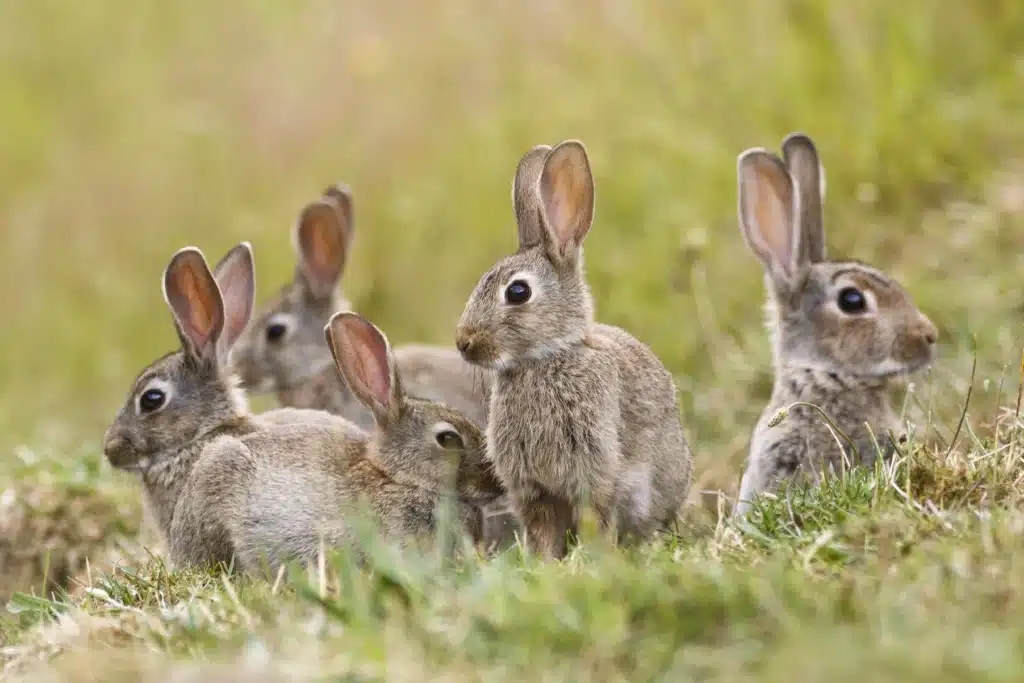
What is a wild rabbits Favourite food?
Wild rabbits are naturally drawn to grasses and other green vegetation, but they also love roots, flowers, clovers, fruits, fungi, nuts, seeds, bark and twigs. It’s important for them to eat a wide variety of these things in order to get all the vitamins and minerals that their bodies need.
Grasses and forbs form the staple of a wild rabbit’s diet. They are rich in fiber, essential for proper digestion, and provide a steady source of energy. Wild rabbits feed on a range of grass species, including meadow grasses, clover, and dandelions. These plants offer a mix of nutrients, such as vitamins, minerals, and complex carbohydrates, aiding in the rabbit’s overall health and vitality.
Leafy greens are another favorite of wild rabbits. These include plants like lettuce, kale, spinach, and mustard greens. These greens are not only palatable but also provide a host of vitamins like A, C, and K, as well as minerals like calcium and potassium. In the wild, rabbits can select from a variety of available greens, promoting a diverse and balanced diet.
Rabbits also consume bark, twigs, and young tree shoots, especially during winter when other food sources may be scarce. The abrasive nature of bark and twigs helps maintain their constantly growing teeth. This fibrous material aids in wearing down their teeth and preventing dental issues that can be fatal if left unchecked.
Fruits and flowers make for occasional treats in a wild rabbit’s diet. Berries, apples, and blackberries may be consumed when available. Flowers like daisies and pansies offer both nutrition and variety, contributing to the rabbit’s overall well-being.
Wild rabbits’ dietary preferences often adapt to the changing seasons. During warmer months, when vegetation is abundant, their diet primarily consists of fresh greens and grasses. As winter approaches and vegetation becomes scarcer, they rely more on bark, twigs, and stored fat reserves to sustain themselves.
Is it OK to feed wild rabbits?
However, if you want to occasionally scatter some leftover leafy greens in the yard for wild rabbits to eat, there is nothing wrong with that. Leftover herbs, strawberry or carrot tops, or the trimmed ends of many different fruits and vegetables are safe for wild rabbits to eat in small quantities.
Feeding wild rabbits can disrupt their natural foraging behavior. Wild rabbits are adapted to finding their own food sources in their environment, which is essential for their survival skills. When humans provide food regularly, rabbits might become dependent on these handouts and lose their ability to find natural sources of sustenance.
Human-provided foods might not align with a wild rabbit’s natural dietary needs. Rabbits require a specific balance of nutrients, particularly fiber, to maintain proper digestion and overall health. Offering improper foods, such as processed or high-carbohydrate treats, can lead to nutritional imbalances and potentially harmful consequences.
Feeding wild rabbits can expose them to various health risks. Incorrect foods could lead to digestive problems, obesity, and other ailments. Additionally, the increased proximity to human activities can expose rabbits to diseases, such as bacterial infections and parasites, which they might not encounter in their normal habitat.
Feeding wild rabbits in a particular area can lead to the congregation of multiple rabbits in one place. This concentration can disrupt the natural social dynamics of rabbit populations and even attract predators. This sudden shift in predator-prey interactions can have unintended consequences for both rabbits and the larger ecosystem.
Feeding wild rabbits can impact the local ecosystem. For example, overfeeding can lead to excessive grazing, which might deplete plant resources and disrupt the habitat for other wildlife. It’s important to consider the broader ecological implications of altering natural feeding patterns.Rabbits that become accustomed to human presence due to regular feeding might lose their natural fear of humans. This can make them vulnerable to predation and other dangers when they encounter unfamiliar humans or predators in the wild.
Do wild rabbits eat carrots?
There are many misconceptions about what rabbits should eat, including the myths that rabbits need lots of carrots and lettuce, as well as regular portions of commercial food. In fact, while carrots are fine as an occasional treat, rabbits don’t actually eat fruit or vegetables in the wild.
Wild rabbits have a natural diet that predominantly consists of grasses, forbs, leafy greens, and various plants found in their native habitats. Carrots, while nutritious for humans and domestic rabbits, are not a staple in the diet of their wild counterparts. This misconception likely arose from the portrayal of rabbits in cartoons and literature.
Carrots are relatively high in sugars and carbohydrates, which can be problematic for rabbits if consumed in excess. Their natural diet is rich in fiber, which supports healthy digestion, and they are adapted to consuming foods with a lower sugar content. Feeding wild rabbits too many carrots can lead to imbalances in their nutritional intake and even cause digestive issues.
Carrots, being crunchy and firm, might seem like a good way for rabbits to maintain their teeth’s natural wear, which is essential due to their continuously growing teeth. However, rabbits in the wild typically have access to a variety of fibrous foods like grasses and twigs that serve this purpose. Feeding them too many carrots might not be as effective as the natural options.
Feeding wild rabbits carrots or any other human-provided food can lead to habituation. When rabbits become accustomed to human interaction and handouts, they might lose their natural wariness of humans, making them more vulnerable to predation and other risks in the wild.
What is rabbit favorite veg?
Rabbits must have an adult-sized handful of safe, washed leafy green vegetables, herbs and weeds daily. Feed a variety of greens daily – ideally 5-6 different types, such as cabbage, kale, broccoli, parsley and mint.
Leafy greens are a staple in a rabbit’s diet, and they often hold a special place as their favorite vegetables. Varieties like kale, spinach, romaine lettuce, and Swiss chard are not only enticingly flavorful but also brimming with nutrients like vitamin A, vitamin K, and calcium. These greens contribute to their overall health and vibrant appearance.
Bitter greens like dandelion greens and arugula are often relished by rabbits. While the bitterness might deter human taste buds, rabbits are naturally drawn to these flavors. These greens provide a range of nutrients and phytochemicals that can aid digestion and promote well-being.
Despite being a common misconception that wild rabbits adore carrots, domestic rabbits do indeed have a soft spot for this root vegetable. Carrots are sweet and crunchy, making them a satisfying treat for rabbits. However, it’s important to offer them in moderation due to their higher sugar content.
Bell peppers, especially the red and green varieties, are often enjoyed by rabbits. They offer a delightful crunch and are rich in vitamin C, which is important for a rabbit’s immune system and overall health.
Can rabbits eat bananas?
High in sugar, apples should only be fed to rabbits as a treat. Also high in sugar, it’s safe for rabbits to eat bananas occasionally. Rabbits have a sweet tooth, so grapes are great as a treat.
Bananas are a popular fruit loved by humans for their sweetness and nutritional value. They are a good source of vitamins such as vitamin C and vitamin B6, as well as minerals like potassium and dietary fiber. However, bananas are relatively high in natural sugars, which is a factor to consider when introducing them into a rabbit’s diet.
Rabbits can indeed eat bananas, but moderation is crucial. The high sugar content in bananas can be problematic for rabbits if consumed excessively. Too much sugar can disrupt a rabbit’s delicate digestive system and potentially lead to gastrointestinal issues like diarrhea. It’s best to offer bananas as an occasional treat rather than a regular part of their diet.
When offering a banana to your rabbit, it’s important to keep portions small. A small slice or a few small pieces of banana are sufficient to satisfy their taste buds without overwhelming their digestive system with excessive sugar intake.
Is it OK to touch a wild rabbit?
Rabbits can be infected with tularemia, which may be transmitted to people if they eat undercooked, infected meat or handle a sick animal. Although it’s always best not to handle any wild animal, wear gloves if you must handle a wild rabbit and wash your hands thoroughly afterwards.
Wild rabbits are naturally skittish and have evolved to be cautious of potential threats. Their survival instincts are finely tuned, and they rely on their ability to escape predators quickly. Approaching a wild rabbit too closely or suddenly can trigger their flight response, which might lead to injury or stress.
The stress of human interaction can have a significant impact on a wild rabbit’s health. Their heart rate can spike, and their stress hormones can surge, potentially leading to negative consequences on their well-being, including digestive issues, weakened immune systems, and even death in extreme cases.
Wild animals, including rabbits, can carry diseases and parasites that might be transmissible to humans. Coming into contact with a wild rabbit could expose you to potential health risks. Additionally, your presence might inadvertently expose the rabbit to diseases that it would not have encountered otherwise.
Can wild rabbits drink milk?
Adult rabbits are lactose intolerant and milk products are bad for the rabbit’s digestive system. Baby rabbits should also not have cow’s milk because it is very different from the milk they get from their mothers.
Wild rabbits are herbivores, meaning their diet consists primarily of plant-based foods. They have evolved to digest and extract nutrients from fibrous plant material like grasses, forbs, and leafy greens. Milk, on the other hand, is a product derived from animals that are completely different from rabbits in terms of their digestive systems and nutritional needs.
Most mammals, including wild rabbits, become lactose intolerant after weaning. Lactose is a sugar found in milk, and the enzyme needed to break it down, lactase, tends to decrease in production after the weaning period. As a result, adult rabbits and many other animals cannot properly digest lactose, leading to digestive issues like diarrhea, stomach discomfort, and bloating if they consume milk.
Milk is not nutritionally balanced for wild rabbits. While milk is a source of calcium and protein, it doesn’t offer the right mix of nutrients that rabbits need for their overall health. Wild rabbits obtain their required nutrients from their natural diet of plants, which provides the appropriate fiber, vitamins, and minerals they need to thrive.
What do rabbits drink?
Rabbits need: Fresh clean drinking water continuously, checked twice daily. Ensure water doesn’t freeze in winter.
Water is the main source of hydration for rabbits. Just like humans, rabbits need water to support various bodily functions, including digestion, circulation, and temperature regulation. Water plays a crucial role in maintaining their overall health and well-being.
For rabbits, access to clean and fresh water is paramount. Water should be free from contaminants and changed regularly to prevent the growth of harmful bacteria. Dirty or stagnant water can lead to health issues and reluctance to drink, which can result in dehydration.
Rabbits have a unique digestive system that relies heavily on fiber. Their diet, which primarily consists of hay, grasses, leafy greens, and occasional vegetables, contains a significant amount of moisture. This natural diet contributes to their hydration needs, but water still remains essential to meet their daily fluid requirements.
Several factors can influence a rabbit’s water intake, including their age, activity level, diet, environmental temperature, and overall health. For example, pregnant or lactating rabbits and rabbits in warmer environments might need more water to stay properly hydrated.
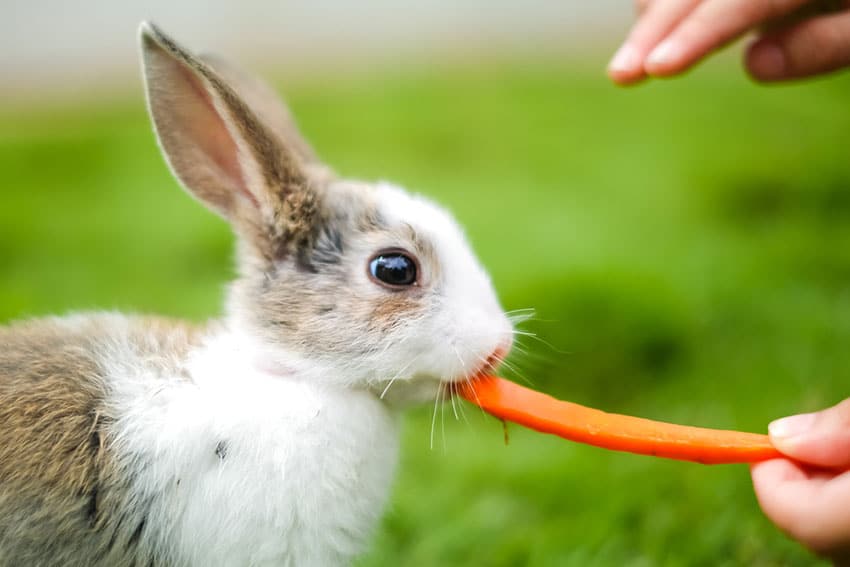
Conclusion
The dietary habits of wild rabbits offer a captivating glimpse into the intricacies of their survival strategies and their integral role within various ecosystems. Their ability to exploit a diverse range of plant materials, from tender greens to bark and twigs, showcases their remarkable adaptability to changing environmental conditions. This adaptability not only enables their own sustenance but also impacts the delicate balance of the food web in their habitats.
The varied menu of wild rabbits serves as a reminder of the complexity of nature’s interactions. Their consumption of grasses and other plants shapes the growth dynamics of vegetation, influencing the availability of resources for other herbivores, as well as predators that rely on rabbits for sustenance. The relationship between wild rabbits and their predators highlights the intricate dance of life and death that characterizes ecosystems.
As we unravel the dietary preferences of these herbivorous mammals, we gain a deeper appreciation for the resilience and resourcefulness of wildlife. The story of what wild rabbits eat is not merely a lesson in biology but a lesson in adaptability, coexistence, and the profound connections that bind all living organisms within the tapestry of nature.

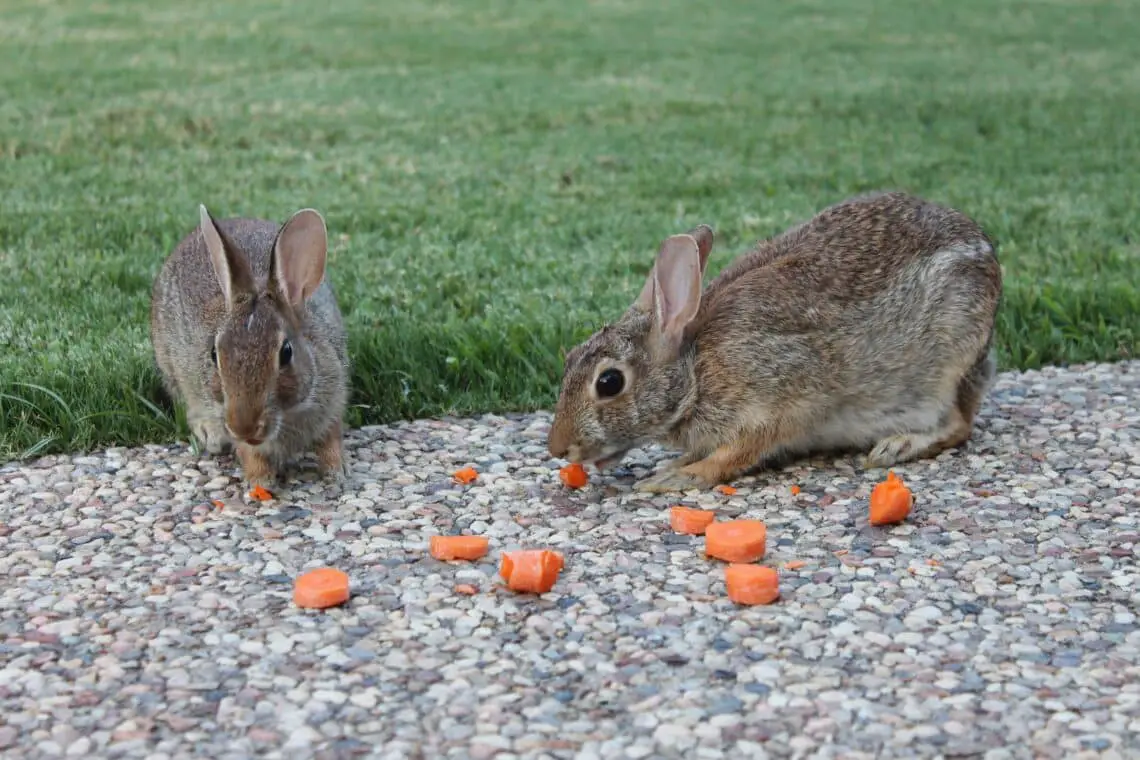
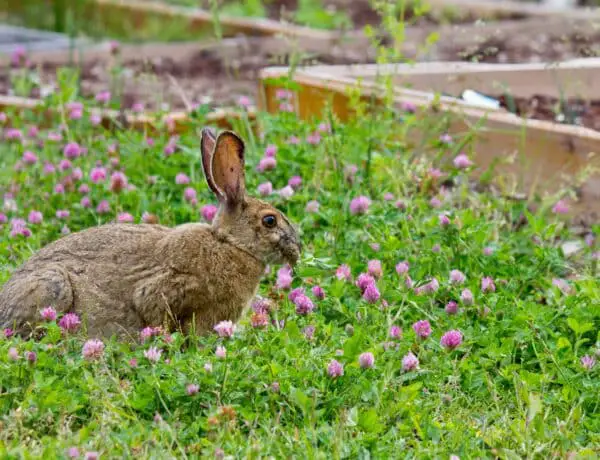
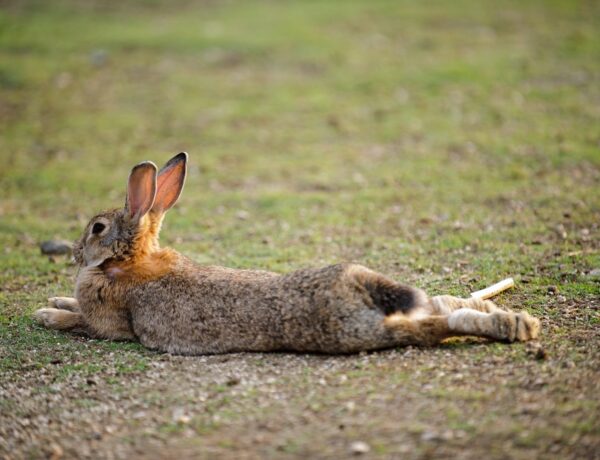
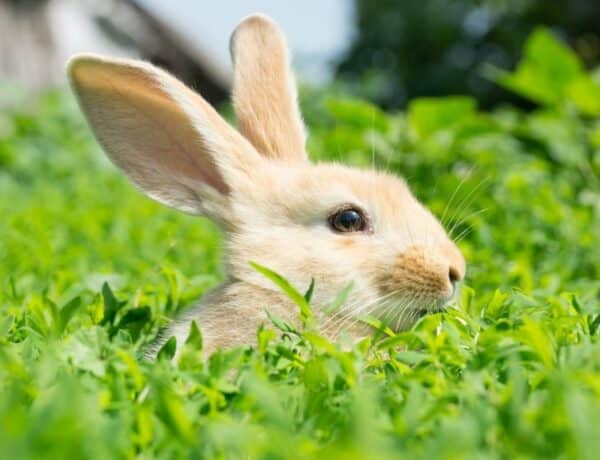
No Comments